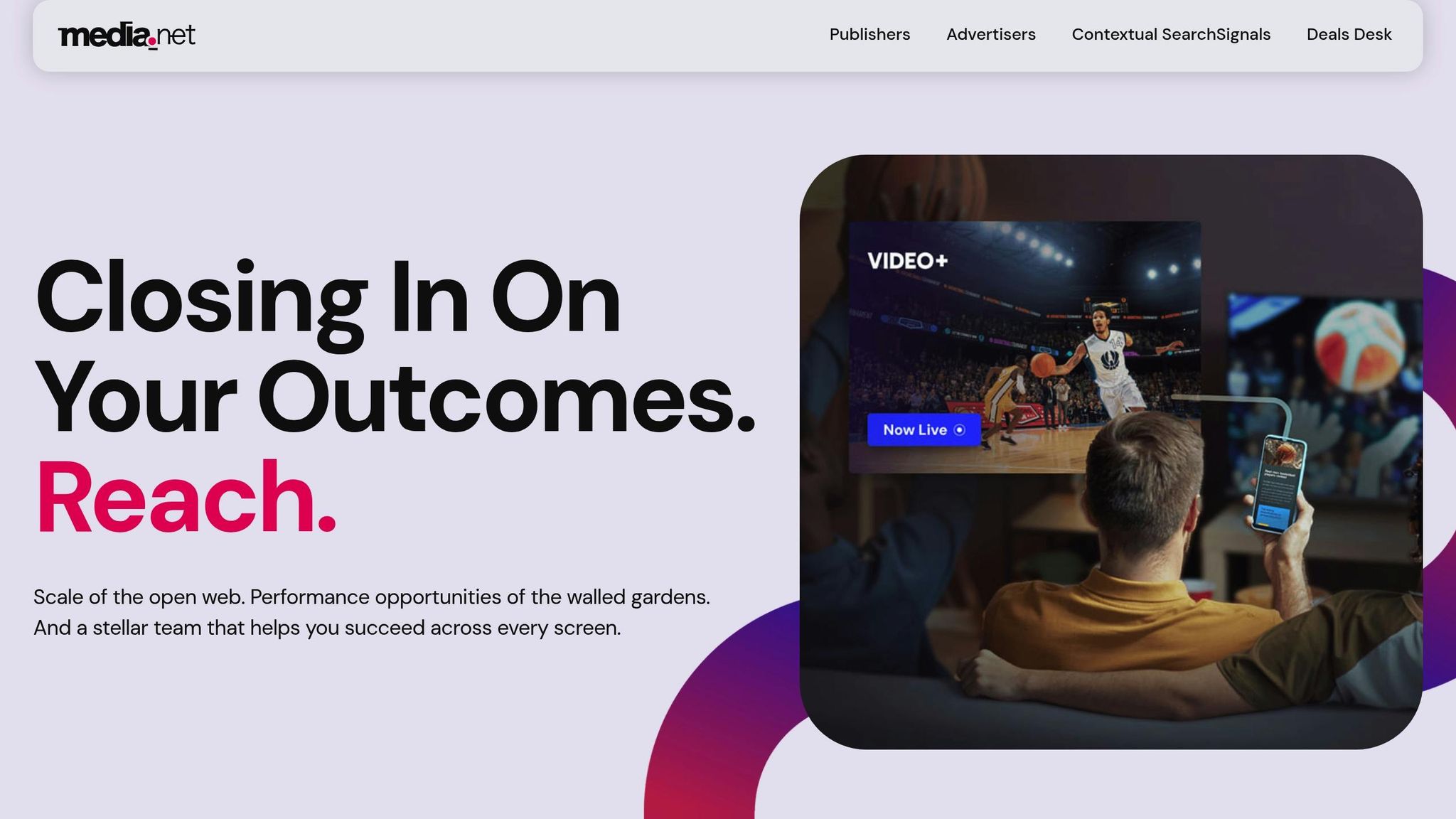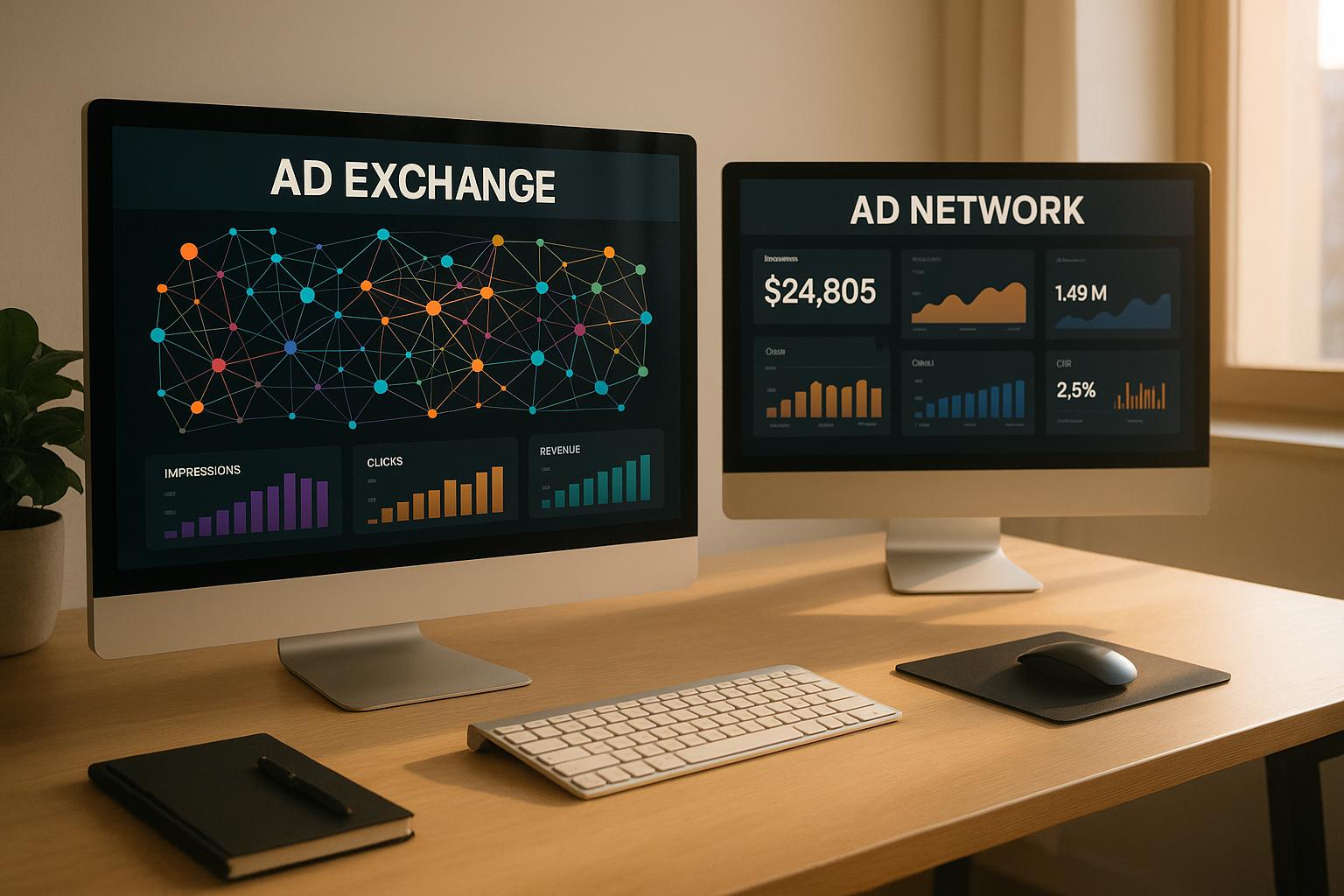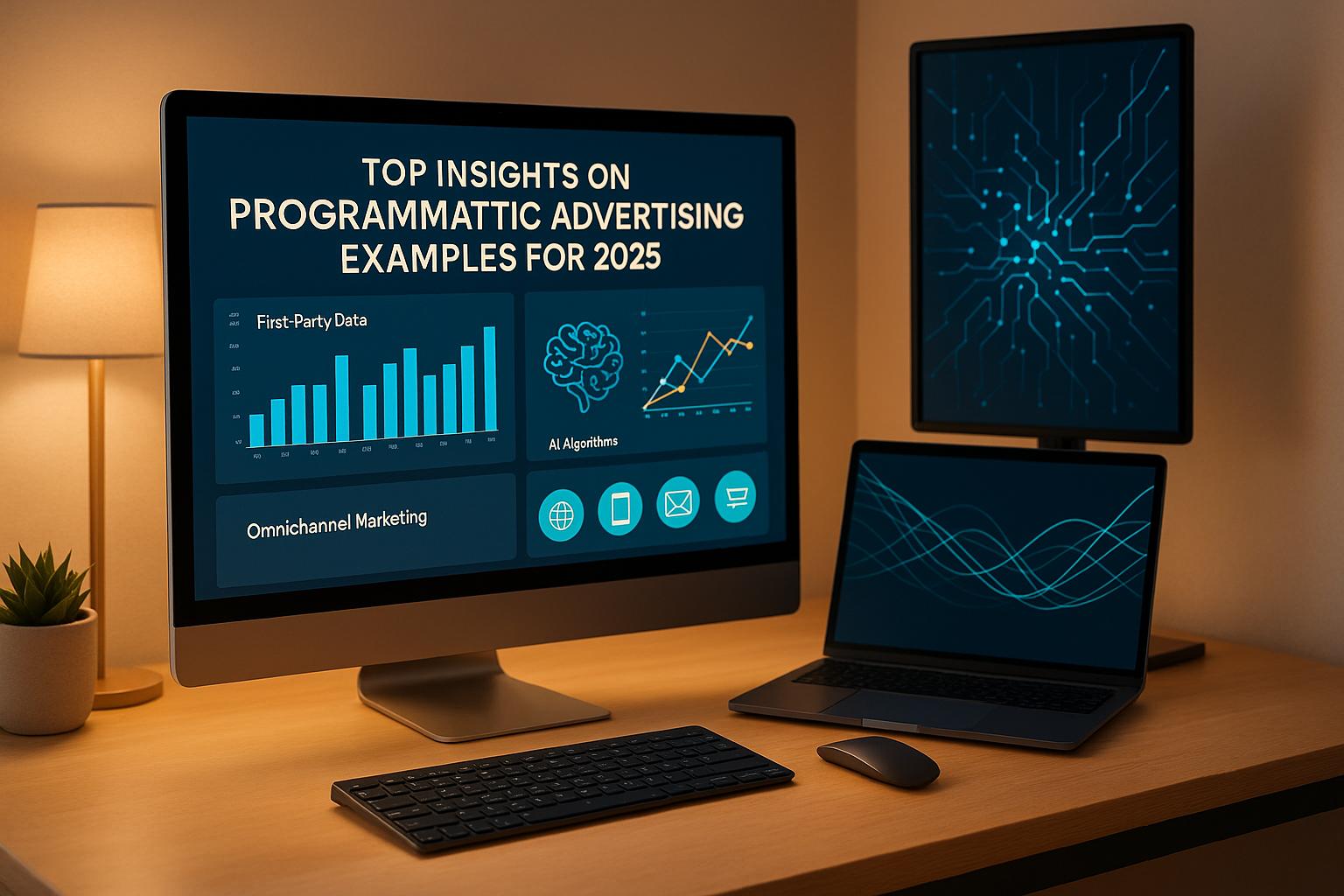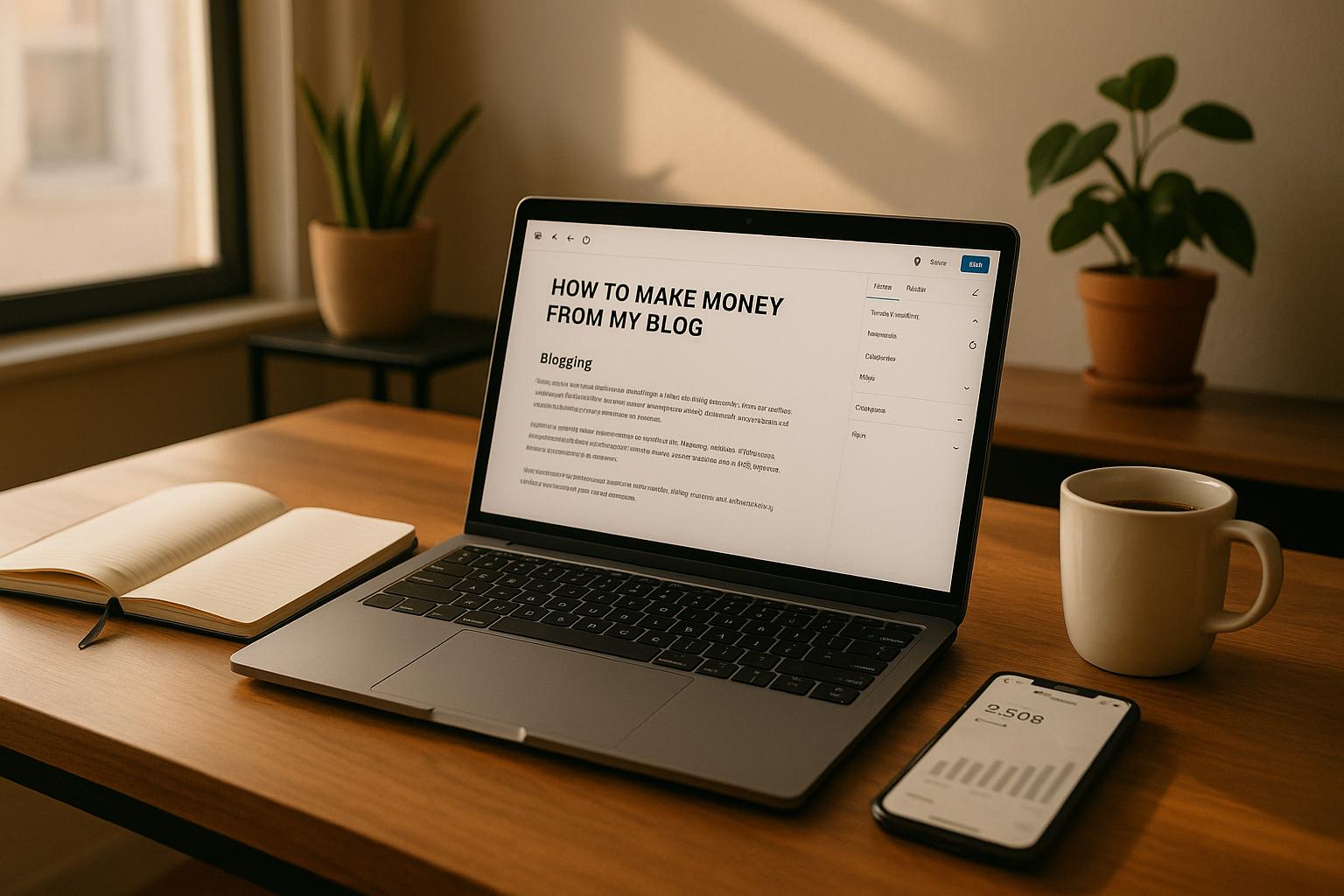Looking for alternatives to Google AdSense? Whether you're a new or established publisher, diversifying your revenue streams is crucial. AdSense may dominate the market, but it comes with limitations like strict approval processes, fluctuating ad budgets, and a 32% revenue share. Here’s a quick guide to the best alternatives:
- TinyAdz: Perfect for niche publishers with no traffic requirements. Offers hyper-targeted campaigns and transparent reporting.
- Media.net: Focuses on contextual ads with competitive CPMs and customizable ad units. Best for tier-1 traffic.
- Ezoic: AI-powered platform that optimizes ad placement and boosts revenue by 50-200%. Great for growing websites.
- AdThrive: Premium network with a 75% revenue share, high RPMs, and strict entry standards. Ideal for lifestyle, food, or parenting niches.
Quick Comparison
| Platform | Revenue Share | Min. Traffic | Payment Threshold | Best For | Main Drawback |
|---|---|---|---|---|---|
| TinyAdz | N/A | None | N/A | New publishers, niche sites | Smaller advertiser pool |
| Media.net | Variable | N/A | $100 | Tier-1 traffic, quality content | Geographic limitations |
| Ezoic | 90% | None | $20 | Optimization-focused publishers | Slower site speeds |
| AdThrive | 75% | 100K monthly views | N/A | High-quality, large niches | Selective approval process |
Choose the platform that fits your traffic, niche, and revenue goals. Each offers unique features to help you maximize your site’s potential.
10 Best Google Adsense Alternatives for Publishers in 2024

1. TinyAdz

TinyAdz stands out as a publisher-friendly alternative to AdSense, offering a platform designed to connect advertisers with niche audiences. Unlike systems that rely heavily on automated placements, TinyAdz uses a more personalized approach to match ads with the right audience. Here’s a closer look at what makes TinyAdz a compelling option.
Revenue Potential
TinyAdz opens the door for smaller publishers by eliminating minimum traffic requirements. This makes it an excellent choice for newer websites, niche blogs, or specialized communities that often struggle to monetize. Publishers can diversify their income streams beyond standard banner ads, creating more opportunities for growth.
Ad Quality
Quality is a top priority for TinyAdz. The platform guarantees 100% human, verified traffic and avoids spammy links. Advertisers and publishers can trust that the display ads served are thoughtfully tailored to the audience, ensuring relevance and engagement.
Transparency
With TinyAdz, publishers have access to clear and verified reporting on ad placements and earnings. This level of transparency means publishers can confidently track their performance, knowing that no bots or fake impressions are skewing the data. It allows for smarter, more informed monetization strategies.
Perfect for Niche Publishers
TinyAdz is particularly well-suited for niche markets. By connecting advertisers with highly engaged audiences, the platform helps advertisers achieve precise coverage in specialized areas. Publishers with loyal, focused readerships can monetize effectively without competing against larger, broad-interest websites. This approach ensures that niche publishers get the attention - and revenue - they deserve.
2. Media.net

Media.net is a contextual ad network that pairs ads with your content rather than focusing solely on visitor behavior. This emphasis on context sets the stage for its revenue potential and ad quality.
Revenue Potential
Media.net offers competitive CPM rates, typically ranging from $1.00 to $5.00 per 1,000 views. However, most publishers see averages closer to $1.00 to $1.25. The platform also claims to deliver higher RPM (revenue per thousand impressions) than Google AdSense for contextual ads.
Unlike Google AdSense's fixed 68% revenue share, Media.net's revenue share varies depending on your website's niche and audience location. This flexibility can be especially advantageous for websites in high-performing niches like technology or finance.
Ad Quality
Media.net uses advanced algorithms to ensure ads are contextually relevant to your content. This often leads to better user engagement, with publishers reporting click-through rates that are 1.5x to 4x higher compared to standard display ads.
The platform allows for customizable ad units, making it easier to blend ads seamlessly into your site’s design. Publishers also have the ability to filter out unwanted ad topics or advertisers, ensuring better alignment with their content.
Additionally, Media.net collaborates exclusively with premium advertisers and prioritizes high-quality traffic from tier-1 countries. This focus helps maintain a high standard across its network, which serves millions of ad impressions daily on over 500,000 websites.
Transparency
Media.net provides a detailed analytics dashboard, offering real-time insights into ad performance. Publishers can track impressions, clicks, revenue, and even dive into specific data for individual ad placements.
However, there are some gaps in transparency. Details about revenue share percentages, eligibility requirements, and payment policies are not disclosed. On the plus side, the platform assigns dedicated account managers to assist with ad optimization.
Suitability for Niche Publishers
Media.net’s contextual ad strategy works particularly well for publishers with focused, high-value content, such as technology or finance topics. Niche websites often see better ad relevance and performance due to this tailored approach.
The platform’s approval process is more rigorous than Google AdSense, requiring quality content and a professional website presentation. This includes having dedicated pages for privacy policies and terms of service. While this higher entry barrier might seem daunting, it helps reduce competition and ensures advertiser quality for those who get approved.
Many niche publishers have found Media.net to be an effective choice, particularly for sites with engaged audiences and topic-specific content. Its approach aligns well with the needs of specialized markets, delivering strong results for publishers in these areas.
3. Ezoic

Ezoic is an AI-powered ad optimization platform that uses machine learning to continuously test various ad placements, sizes, and types on your website. Rather than sticking to static ad setups, Ezoic dynamically adjusts ads to maximize your revenue potential.
Revenue Potential
Ezoic's AI-driven system has been known to deliver impressive revenue growth compared to traditional ad networks. For example, in May 2024, a niche history website with 1.1 million monthly visits saw its earnings skyrocket from $7,764 to $27,005 - a staggering 248% increase - after implementing Ezoic's platform.
Many publishers report earning 50-200% more with Ezoic compared to basic ad setups. Of course, results depend on factors like niche, traffic sources, and audience engagement. Once fully optimized, publishers can potentially earn $40-$60 per 1,000 page views.
"Ezoic usually increase your adsense earning 2x or more. They do the A/B testing and places ads in right place to boost your revenue." - Ayush Pandit, MCA from University of Mumbai
Ezoic operates on a 10% revenue share model under its Standard plan, allowing publishers to retain 90% of their earnings. For those looking for additional features, the Premium package is available for Level 2 or higher customers, though it requires a one-year commitment.
Next, let’s take a closer look at how Ezoic maintains ad quality while optimizing revenue.
Ad Quality
Ezoic’s AI technology is designed to match ads to your content, ensuring relevance for niche audiences. By analyzing both your content and visitor behavior, the platform serves ads that align with your audience’s interests.
To give publishers more control, Ezoic includes an Ad Reviewer tool that lets you block specific ads or even entire ad categories that don’t fit your site’s theme or audience preferences. Beyond placement, the platform optimizes ad sizes and types to strike a balance between boosting revenue and maintaining a smooth user experience.
Ezoic also enforces strict content guidelines. Websites must feature original, engaging content and avoid copyrighted material, adult content, or anything illegal or harmful, ensuring a high standard across the network.
Transparency
Ezoic offers detailed analytics and insights through its publisher dashboard, providing a clear view of ad performance and revenue metrics. Features like page-level reporting allow publishers to pinpoint their best-performing campaigns and evaluate their return on investment.
That said, it’s worth noting that all revenue figures displayed in the dashboard are estimates and subject to change. This applies to all reporting features, including earnings sections and advanced analytics.
Ezoic also reserves the right to modify its pricing and payment structures at any time. Publishers can test the platform risk-free with a 30-day free trial before deciding between an ad-funded option or the 10% revenue share model.
Suitability for Niche Publishers
Ezoic is particularly well-suited for growing websites looking to maximize their revenue through advanced optimization rather than basic ad placements. It’s especially beneficial for smaller publishers or those just starting their monetization journey, as the platform doesn’t require massive traffic to deliver meaningful results.
The AI-powered system takes the hassle out of manual testing, making it ideal for niche publishers who want to focus on content creation while the platform handles ad optimization. Ezoic’s ability to match ads with specialized topics ensures relevance, keeping your audience engaged.
Additionally, Ezoic integrates seamlessly with existing ad networks, so publishers don’t have to abandon their current revenue streams while testing its features. Even for smaller sites with modest daily earnings, Ezoic can provide a noticeable boost, though an initial setup period is required.
sbb-itb-957fd63
4. AdThrive

AdThrive is a premium ad network that partners with established websites to maximize revenue through selective collaborations and high-quality ad placements. Unlike more accessible networks, AdThrive is highly selective, accepting only 15–20% of applicants to ensure a community of top-tier publishers. Let’s dive into why AdThrive stands out among premium networks.
Revenue Potential
AdThrive is known for delivering higher earnings compared to standard ad networks. They even guarantee a 20% higher RPM (Revenue Per Mille) than what publishers earned with their previous ad management companies within the first two weeks - without increasing the number of ads on the site.
The average RPMs for publishers typically range between $13 and $15 per 1,000 page views, but some have reported rates as high as $30 [42,43,48]. On top of that, AdThrive offers a 75% revenue share to publishers - higher than the 68% offered by many other networks [42,44].
For instance, one high-traffic publisher experienced a significant jump in daily ad earnings, going from $1,300 to $2,300 - a 77% increase - after switching to AdThrive.
Ad Quality
AdThrive places a strong emphasis on ad quality, using rigorous vetting processes and proprietary optimization tools like Nucleus and Marmalade to ensure ads are relevant and engaging. They also maintain a strict 30% ad density policy to strike a balance between revenue generation and user experience. Publishers have the flexibility to request specific ad placements, tailoring the experience to their audience [41,45].
"Advertisers know and trust the quality of sites they find in the AdThrive community, so we work hard to maintain the standards that keep earnings as high as possible for every AdThrive publisher!"
This commitment to quality helps AdThrive secure higher-paying campaigns, benefiting both advertisers and publishers.
Transparency
AdThrive excels in transparency, offering publishers a robust dashboard with detailed analytics and personalized account management. These tools provide clear insights into performance metrics, empowering publishers to make informed decisions to maximize their revenue. Many publishers also appreciate AdThrive’s additional resources, such as SEO guides and email courses, which help them succeed.
"AdThrive is an amazing ad network for publishers. They do one thing but do it exceptionally well and that is to make publishers (i.e. content creators) reams of money from ads." – Jon Dykstra
Suitability for Niche Publishers
AdThrive is particularly well-suited for niche publishers, but it does have strict entry requirements. Websites must have a minimum of 100,000 monthly page views, with most traffic coming from the United States, Canada, the United Kingdom, Australia, or New Zealand. For existing AdThrive publishers adding a second site, the threshold drops to 30,000 monthly page views [48,49].
The network favors publishers in niches like lifestyle, food, family, parenting, and home, and prioritizes content that is engaging and valuable to readers. With an acceptance rate of just 15%, publishers need to meet high standards in traffic, content quality, site security (HTTPS), and technical optimization.
Advantages and Disadvantages
Every platform comes with its own set of strengths and limitations, and it’s important for publishers to weigh these carefully. The right choice depends on your specific needs and the audience you’re trying to reach. Below is an overview of the key benefits and challenges, along with a handy table for quick comparison.
TinyAdz is known for its accessibility and focus on niche markets. With no minimum traffic requirements, it’s a great fit for newer publishers. Its hyper-targeting capabilities help connect publishers with relevant advertisers, which can improve engagement. Additionally, TinyAdz goes beyond traditional banner ads, offering monetization options like social media, newsletters, and even events. On the downside, being a newer platform, its pool of advertisers might not be as large as that of more established networks.
Media.net specializes in high-quality contextual advertising and performs particularly well with traffic from tier-1 countries. Its ads are designed to align closely with your content, creating a better user experience. The platform also provides dedicated account support. However, its strict approval process and focus on specific geographic regions may limit its reach.
Ezoic leverages AI to optimize ad placements and track performance, making it an appealing option for experienced publishers aiming to fine-tune their strategies. It offers a flexible revenue model, including ad-funding or revenue sharing, and has a low $20 payment threshold. That said, some users have reported slower site load speeds and inconsistent ad quality.
AdThrive stands out with a strong revenue-sharing model, offering publishers 75% of ad revenue. It’s tailored to maximize earnings while maintaining high ad quality. The platform is particularly selective, favoring niche publishers in areas like food, home, parenting, and DIY.
| Platform | Revenue Share | Min. Traffic | Payment Threshold | Best For | Main Drawback |
|---|---|---|---|---|---|
| TinyAdz | N/A | None | N/A | New publishers, niche sites | Smaller advertiser pool |
| Media.net | Variable | N/A | $100 | Tier-1 traffic, quality content | Geographic limitations |
| Ezoic | 90% | N/A | $20 | Optimization-focused publishers | Site speed, ad consistency |
| AdThrive | 75% | 100K monthly views | N/A | Food, home, parenting niches | Selective approval |
The table above provides a quick snapshot of what each platform offers. TinyAdz is a solid choice for beginners due to its accessibility, while Media.net and Ezoic cater to publishers with tier-1 traffic or a focus on optimization. For those with specialized, high-quality audiences, AdThrive’s selective approach could be especially rewarding.
When deciding, think about how each platform’s requirements and features align with your current traffic levels and content strategy. The right fit can make a significant difference in your monetization efforts.
Conclusion
Based on the comparisons above, the best platform for you depends on your current traffic levels and long-term growth plans. Studies show that 1 in 3 publisher websites earns little to no revenue, so choosing a solution that fits your specific needs is crucial. For newer publishers, TinyAdz offers a great starting point. It has no minimum traffic requirements and provides monetization options tailored for niche audiences. As your site gains more visitors, their premium features can help increase your earnings.
Keep in mind that approval often hinges on maintaining high-quality, original content and attracting traffic from English-speaking regions. Ultimately, the right monetization strategy should align with your niche and adapt as your publishing journey progresses.
FAQs
What should I consider when choosing an alternative to Google AdSense for my website?
When choosing an alternative to Google AdSense, keep a close eye on factors like earning potential, such as higher CPM or CPC rates, and the variety of ad formats available. Options like native ads, video ads, or interactive formats can help increase user engagement and make your content more dynamic.
It's equally important to pick a platform that matches your site's traffic levels and prioritizes non-intrusive ad placements to maintain a good experience for your visitors. After all, ads shouldn't drive users away - they should complement your content.
Also, think about how easily the platform integrates with your website. Does it offer straightforward setup? Does it come with dependable customer support to help with both installation and ongoing tweaks? These details can have a big impact on how smoothly the transition goes and how much you can ultimately earn.
How do the revenue share models compare among the Google AdSense alternatives discussed?
The way revenue is shared differs quite a bit among the platforms discussed. Ezoic stands out by offering publishers up to 88% of the ad revenue, making it one of the more competitive choices. AdThrive uses a 75/25 model, meaning publishers keep 75% of their earnings. Meanwhile, Media.net runs on a contextual ad system but doesn’t publicly reveal its revenue share percentages.
When comparing these platforms, it’s important to look beyond just the revenue split. Consider aspects like the quality of ads, the transparency of the platform, and how well it fits with your audience and content niche.
What advantages do AI-powered ad platforms like Ezoic offer over traditional ad networks?
AI-driven ad platforms like Ezoic leverage machine learning to fine-tune ad placements, formats, and timing on the fly. This real-time optimization not only helps publishers boost their revenue but also improves the user experience by testing and tweaking ad strategies automatically to uncover the most effective setups.
What sets these platforms apart from traditional ad networks is their dynamic approach. Instead of sticking to static or manually managed methods, AI-powered systems constantly analyze data, adjusting to shifts in audience behavior and preferences. The result? Better performance, higher efficiency, and a tailored experience for your website visitors.


